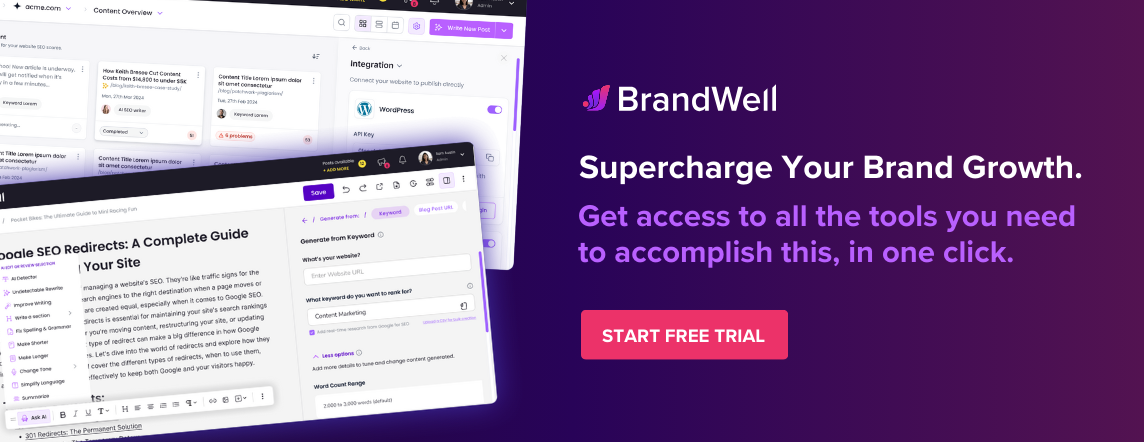Discover top guides, trends, tips and expertise from AIO Writers

Creating an amazing newsletter is just the first step in achieving email marketing success. To get tangible results from your email marketing campaigns, you have to get people to actually open your email, read your newsletter, and click on a link.
Unfortunately, only 21.5% of your emails will be opened. That is the average email open rate across all industries.
If your numbers are far off, there are strategies for how to increase newsletter open rates that you can incorporate into your email marketing strategy.
In this blog post, you will learn:
- Why email open rates matter.
- What constitutes a good average email open rate.
- Proven strategies on how to kick your email marketing campaigns into high gear.
Let’s get started.
Table Of Contents:
- What Does Email Open Rate Mean?
- What is a Good Email Open Rate?
- Why is My Newsletter Open Rate So Low?
- How to Increase Newsletter Open Rates
- Conclusion
What Does Email Open Rate Mean?
An open rate is the percentage of people who opened an email out of all those who received it.
The email open rate matters because it is a key indicator of success when analyzing email marketing efforts.
Here’s a formula for calculating your email open rate.

What is a Good Email Open Rate?
A good average open rate for newsletters is around 17% to 28%. But this is only a starting point. You should look into your specific industry average and compare your metrics against those numbers to get a more accurate average open rate.
Many factors can impact your average open rate. These include:
- Subject line length and quality.
- Sender name recognition.
- Content relevance.
- Delivery time.
If your newsletter open rate is below average, you should take a good look at your email marketing strategy and find out why your newsletter is not reaching its potential open rate.
Why is My Newsletter Open Rate So Low?
Many marketers struggle with low open rates on their newsletters, leaving them feeling frustrated and discouraged. But the good news is that there are several strategies you can use to improve email open rates.
First, let’s find out why your subscribers are not opening your email.
1. Poor Subject Lines
Your subject line is the most important element when it comes to getting people to open your emails. Make sure that you’re using creative, attention-grabbing language to entice readers to click on your email.
Avoid words like “free” or “guaranteed” which could trigger spam filters, resulting in your email never reaching its intended recipient.
2. Unappealing Content
If your previous emails were not interesting or relevant enough for readers, they won’t bother opening any future emails from you.
To increase email open rates, make sure that you only distribute useful content that motivates readers to take action.
3. Too Many Emails
Sending too many emails can also lead to lower open rates because recipients may start tuning out after getting bombarded by spammy emails from you.
To improve email open rates, try spacing out how often you send emails so that recipients don’t feel overwhelmed by too much communication from you.
By understanding the causes behind your low open rate, you can take steps to adjust your marketing campaign and increase email open rates in the future.
How to Increase Newsletter Open Rates
If you want to improve email open rates for your newsletters, here are 10 ways to do that.
1. Clean Up Your List
Verify that your email list is current and accurate. Make sure the emails on your list are valid, active addresses so that the recipients will actually receive your messages.
2. Segment Your Audience
Segmentation of email campaigns can lead to a whopping 760% increase in revenue. That’s because segmenting your email list into different categories based on interests or preferences can help you create targeted newsletters for each group.
For example, if you have a restaurant in California, you could send out emails to people who live in the area and let them know about upcoming specials or discounts. Or if you sell products online, you might want to target people based on what they’ve purchased before so that they receive relevant product recommendations.
You can also use segmentation to reach out to potential customers. If someone has shown interest in your brand but hasn’t made a purchase yet, sending them an exclusive offer may be just the thing that encourages them to take action.
Segmenting is also helpful when it comes to measuring the success of your campaigns. By tracking different segments separately, it’s easier to see which groups are more likely to respond positively and which need more attention.
Segmented emails often result in higher open rates and click-through rates since readers feel like they’re getting something that was offered specifically to them instead of generic messages that were sent to all subscribers.
This type of personalization helps businesses build relationships with customers – from welcome emails all the way through loyalty rewards programs and beyond.
3. Create Compelling Email Subject Lines
Most people decide to read or skip your email based on the subject line. Therefore, the most effective way to increase email open rates is to write a captivating subject line that will compel the reader to click on it.
Keep it short and sweet. Your subject line should be short but informative enough for people to know what’s inside without giving away too much information. Anything longer than 8-10 words will start to lose its impact.
Make it relevant. Connect your subject line with something that matters to your reader by mentioning a current event or trend related to their interests.
Create curiosity. Ask questions that spark curiosity and get people wondering what lies inside the email — this will help increase open rates significantly.
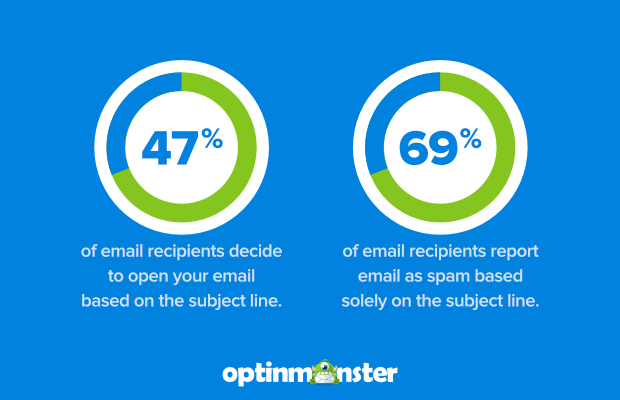

The subject line can make or break your email newsletter
People love lists because they’re easy to digest. Including numbers in your subject line gives readers an idea of how much content is included without having to read through long paragraphs of text.
Consider using emojis or power words to grab attention and stand out from other emails in someone’s inbox.
Make your email personal by adding the recipient’s name in the subject line and the first paragraph of your newsletter. You could even customize an offer or discount code based on individual user history from available information in your database. This helps create a sense of rapport between sender and receiver, thus increasing the likelihood of a favorable response.
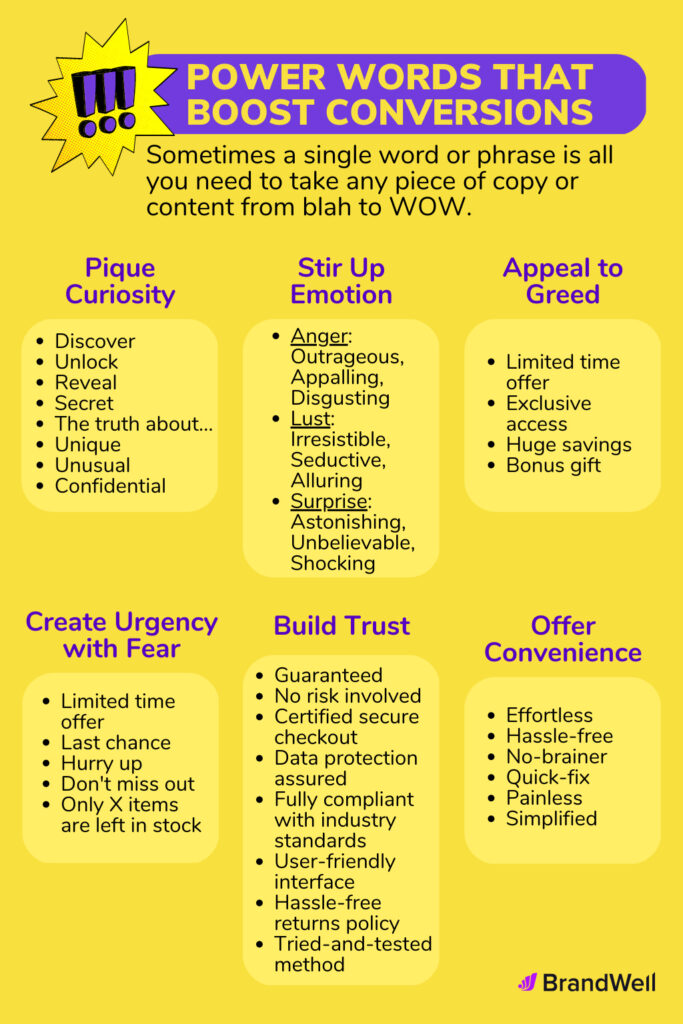

4. Write Excellent Email Copy
Before you write your email copy, it’s important to understand who you are writing for. What are their interests, preferences, needs, and pain points that your product can address?
Use a conversational tone in your newsletter so readers can relate to what you are offering. Avoid jargon-filled technical language that only a few people can understand.
To create an inviting atmosphere for readers, avoid complex words like “consequently” or “utilize” and opt for simpler terms like “so” or “use”, which deliver the same meaning without sounding too formal.
Make your content scannable. People generally don’t read emails word-for-word, thanks to information overload.
First, they will look at the headline and decide whether they want to read more or move on. If the headline gets their attention, then they will scan the body copy and look for anything that catches their eye. That said, make sure every section has its own header which summarizes what’s below it so readers don’t have to dig around.
The average person only spends 15 seconds looking at an email before moving on. Therefore, you must get your point across within the first few sentences of your body copy and convince the reader to stay on the page until the end.
A common mistake many marketers make is focusing too heavily on product features instead of product benefits. For example, describing a camera’s resolution in megapixels may sound great but explaining how the improvement in image quality produces better pictures would be a far better way to connect to your audience.
Each email must have a call-to-action (CTA) that prompts the reader to take action — whether it’s to sign up for an ebook download or buy something from you. Make sure your CTA has an incentive for the reader to click on it.
5. Personalize Your Message
Personalizing each message can significantly increase open rates, as this demonstrates to recipients that they are not just a statistic on your mailing list. When readers see their name in the subject line or at the beginning of an email, they may be more inclined to read further.
Another way of personalizing content is through targeted ads on social media platforms such as Facebook, Twitter, and Instagram. By targeting specific audiences based on interests, age range, and location, you can create campaigns that speak directly to potential customers in a language that they understand.


Here’s a personalized email from Alaska Airlines
In addition, personalized recommendations on e-commerce sites can help increase conversion rates because shoppers feel like there’s someone out there who understands them. For example, Amazon uses predictive analytics algorithms that suggest items similar or related to those already viewed by customers – allowing shoppers to find items that they don’t know they need.
6. Offer Incentives
Try offering incentives within newsletters such as discounts or exclusive offers only available through subscribing. This encourages readership while simultaneously providing value, making readers more likely to open these types of communications in the future.
7. Find the Right Timing
Another way to improve open rates is by optimizing the timing of when you send out newsletters. You want to find a balance between sending them often enough so that people don’t forget about you, but not too often to make them unsubscribe from your list.
Consider testing different times of the day or days of the week when sending out newsletters as different audiences have different schedules or habits.
If you want to make sure your emails are being read, it’s important to find the optimal send time. While there isn’t a one-size-fits-all answer, MailChimp’s data can help you determine when is best for your audience.
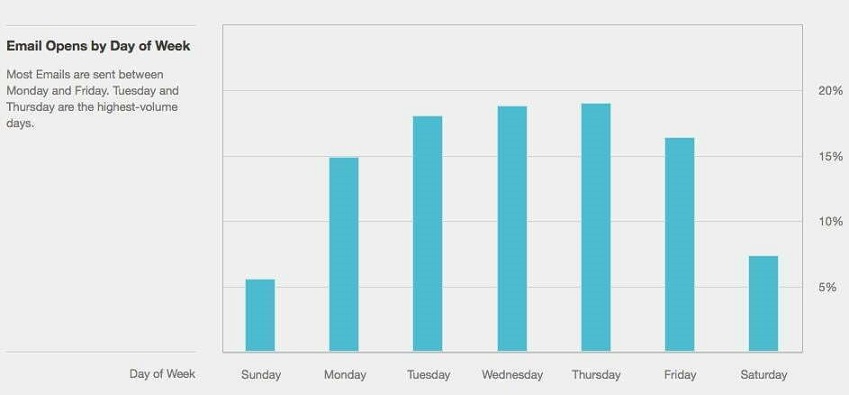

Marketers often send email campaigns during the middle of the week
MailChimp finds that Tuesday through Thursday have pretty much the same open rates. This means that if you’re looking for consistency in opens and clicks, these days should be at the top of your list. However, keep in mind that Fridays tend to have slightly lower open rates than other weekdays — so adjust accordingly.
Surprisingly enough, weekends may not be as bad as expected when it comes to email engagement. In fact, MailChimp found that emails about hobbies performed best over the weekend, so if your content falls into this category or another similar niche (like travel), consider sending out an email on Saturday or Sunday.
It’s also worth noting that personalization plays an important role here too. If someone signs up for your newsletter on Wednesday afternoon but never checks their inbox until Friday morning, you might want to wait before sending them new content.
Once you’ve determined what works best for you and your subscribers, stick with it. People will appreciate regularity and come to expect newsletters from you at certain times, making them more likely to engage with future emails.
8. Format for Mobile
If your newsletter is not optimized for mobile devices, then you’re missing out on a lot!
- 46% of email opens are from mobile phones and tablets.
- 55% of global web traffic is generated from mobile phones.
- 46% of smartphone users prefer to communicate with businesses through email.
With more than half of all emails now read on mobile devices, you want to make sure that your newsletter looks good on a smartphone or tablet. It only takes a few seconds to preview the message in multiple formats, but it can make a huge difference in how readers perceive your business.
When creating an email in a marketing automation platform such as Hubspot or Mailchimp, be sure to check what the message looks like on various devices. This includes both Android and iOS products since they often display differently due to different operating systems. You may need to adjust font sizes and line spacing so that the text is easy to read on smaller screens.
Also, keep images small so they don’t take up too much space when viewed from a mobile device.
Pay attention to links within your messages — they should be easy for people to click using their thumbs on tiny keyboards. Make sure buttons are large enough for someone with big fingers.
If you have several links within one message, consider grouping them into one call-to-action button instead of having multiple separate ones scattered throughout the body copy. This will reduce clutter and make it easier for readers who are viewing your email from their phones.
In terms of content, write short subject lines that fit within the character limit imposed by most email providers (usually around 50 characters). Longer subject lines get truncated when opened on a mobile device – not something you want happening if you’re hoping for maximum engagement rates.
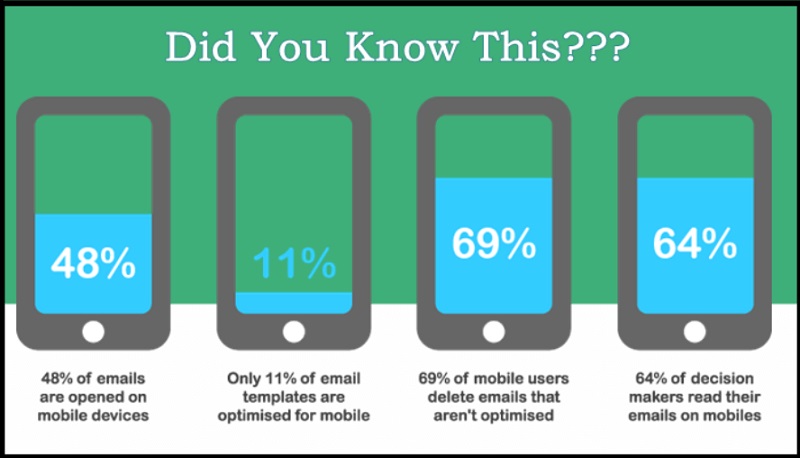

Keep your emails mobile-friendly
9. Avoid Spam-Like Practices
It’s important to avoid spam-like practices when sending emails as this can negatively affect your email deliverability. Spam words are words that search engines and email filters use to identify emails they think may be unsolicited or inappropriate.
Examples of these words include “sale”, “deal”, and “free.” If you use any of these in the subject line or body of your email, it will likely end up in a spam folder.
In addition to avoiding spammy language, it is also important to limit the number of links included in an email message. Too many links can appear suspicious and trigger a red flag for a filter system. A good rule of thumb is no more than three external links per email newsletter — one for each social media channel you have active plus one additional link for whatever content you want readers to explore such as your website or blog post.
You should also consider getting certified by a third-party reviewer like Return Path which can help increase open rates. This certification will confirm that messages sent from your domain are legitimate and not coming from malicious sources — giving recipients confidence that they are safe to open.
If possible, try using double opt-in signup forms which require users to confirm their subscription before receiving any newsletters. This ensures higher quality subscribers who actually want to receive what you have to offer instead of just random strangers who may never open anything you send.
10. Create a Recognizable Sender Name
The sender name you use in your emails can make a big difference in your open rates.
When choosing a sender name, pick one that is appropriate for the type of email you’re sending out. For example, if you’re sending promotional emails about products or services, using something like “promotions@yourbusiness.com” might be more effective than simply using “info@yourbusiness.com.”
Avoid using generic names or “no-reply” email addresses such as “noreply@yourbusiness.com” as these may be seen as suspicious and marked as spam before they’re even opened.
It’s also important to add some sort of personal touch, like “johnsmith@yourbusiness.com.” This gives off a friendly vibe which makes people more likely to open and read your email.
For content marketing purposes, it’s also beneficial to add part of your brand or company name so people know who exactly the email is from. Doing this could help increase click-through rates on links embedded in emails and boost overall engagement.
Conclusion
Email open rates are an important metric in email marketing. Understanding the science behind them can help you make more informed decisions about your email campaigns and increase your chances of success.
From testing subject lines to optimizing email design, there are many ways how to increase newsletter open rates. With these 10 proven strategies, you’ll be able to see an improvement in your open rates and reach more customers with each campaign.
Struggling to get your emails opened? AI may just be the answer! A smart bot like AIMEE can help you write catchy, personalized email subject lines and copy in no time.

UNLOCK YOUR POTENTIAL
Long Headline that highlights Value Proposition of Lead Magnet
Grab a front row seat to our video masterclasses, interviews, case studies, tutorials, and guides.

